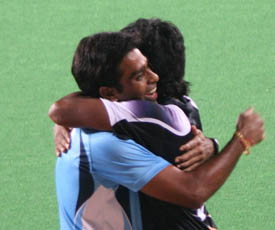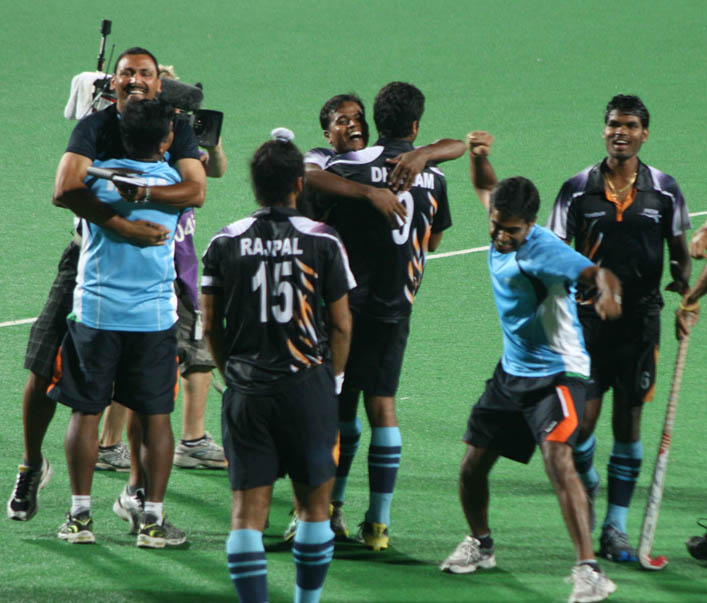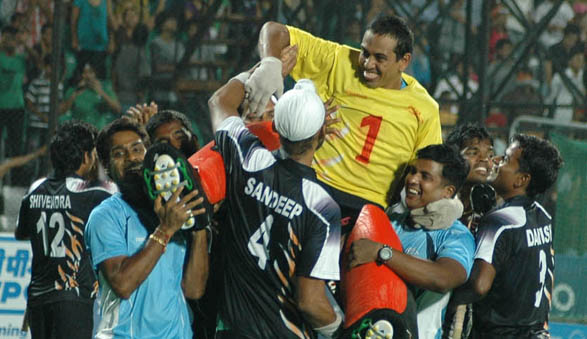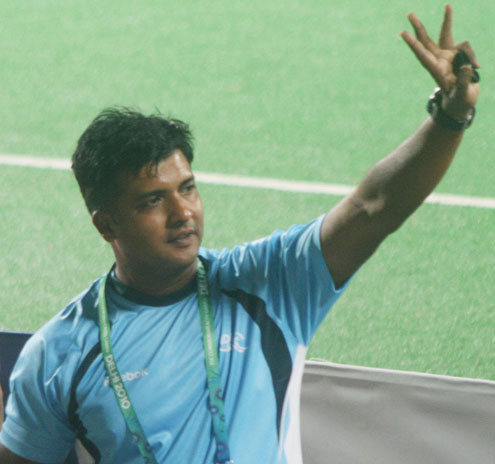Share
Imagine a situation. India is playing an important match. The contest is very close, both teams press hard and are on an aggressive mode. Suddenly a vital cog in the Indian mid-field collides with an opponent, tumbles, falls on the ground and writhing in pain. He or she is unable to even stand up, it seems the team is in danger of losing the match.

Its normal sight on turfs in every tournament. It is also equally normal that 2 or 3 volunteers come running in and take the player to sidelines on a stretcher. Commentators hoarse it’s a huge blow to the team, ‘ the injured player is main play-maker’ they let you know.
Nothing waits for anybody, the match starts again, India substitutes and tries to keep up the same tempo. Shortly, say, after 4, 5 minutes, we see the same player who was injured minutes ago, is back on the field, so reclaimed is he that momentarily appears he never was injured in the first place!
Commentators jump at the development, and let you know the player have made a speedy recovery and how he possesses a never-say-die attitude and etc etc. But not many takes the pain to look at the team’s bench where a few pros continuously treated the injured soul, giving him ice-treat, pain-relief spray, stretch his legs and made him fit again, using all tricks in the medical trade – all in quickest possible time.
Yes, we are talking about the back-stage heroes –doctors, trainers, physiotherapists who are as important to team the as the coaches are.

Why? Dr. B.K. Nayak explains a real incident.
By the way, if you don’t know Dr. Nayak, he has been the doctor of the Indian National men’s hockey team and is from Indian Army.
“During Commonwealth Games, Gurbaj Singh got injured, was completely ruled out for the next match. I and Sri (Srikant Iyenger- Physiotherapist of the team) gave him aggressive treatment. We know Gurbaj is a crucial player, so we had to make him fit to play. We gave him strong physiotherapy, did the best we could, and next morning, believe us, he was there running on the turf” says beaming Dr. Nayak.
This is one among the innumerable examples which sheds light on the important role being played by the professionals like Nayaks and Iyengars.
The moments that etches in every tournament is the celebrations of wining teams. Be it annual Azlan Shah Cups or crucial multi-sports events like Delhi CWG. Among those excited players coaches will always be these back-room pros, enjoying every bit of team’s successes. The pictures in this essay would show that amply. Nayak and Iyengar line-up with the team as they the other five go for the crucial penalty stroke (CWG Semifinal) competition. The moment Shivender stroked the last ball, or when Bharat Chetri, our golie, jumped his right to save an English stroke, the duo fist, go berserk. They are truly part and parcel of the team, and its every feat.
When asked Dr. Nayak whether doesn’t he feel bad or slighted when people tend to forget them whenever the team wins, as normally people congratulate the players and coaches and ignore support-staff?

The word ‘gentleman’ fits them to the hilt.
“I come from Army. For us duty is the most important thing. When we are told to do a task, we do it with full honesty without hoping for limelight”
Srikant Iyenger, the enthusiastic physiotherapist also feels the same. “What we are doing is, of course, a back stage work. But we all are parts of a team. Coaches’ job is to train the players, players’ job is to play and our job is to keep the players fit. So, if Indian team wins a match, we feel satisfied that we did our job well.”
Iyenger, who also worked with Chennai Veerans in PHL, made it to the Indian team in 2007 when Joachim Carvalho took over as the national coach. At that time, team had super-stars like Dilip Tirkey, Ignace Tirkey, Prabhjot Singh. A young physio might feel a little shy or scared while wanting to give instructions to such veterans as Dilip.
But Srikant has a totally different tale to tell.
“Initially, I was a little scared because the team had big stars in it. I also thought it would be a little tougher for me, but all of them were so co-operative and sweet that it really made my job easier. If I faced any challenge, it was regarding the injuries not with any of the players. Even all the coaches I have worked with, have been really very nice. They have given me ample space to work. Different coaches have different ways of operation, but all of them have given me full freedom to operate” tells Srikant, who started his stints with the national team when worked with Dr. Kannan Pughazendi, who accompanied the Indian team for the 1996 Olympics and 2002 World Cup.

Dr. Nayak, who has worked with the Indian boxing team for so many years before joining the hockey team in June 2009, has done his M.D. in physiology and is an expert in the field of traumatology. Chief coach Jose Brasa wanted a team doctor of his caliber, and the Indian team got his services.
Brasa insists on the need to have a band of qualified and trained support-staff with the sports teams. “The amount of matches being played today is much more than earlier. Games have become much faster and tougher, so injuries are bound to happen frequently. So every team needs a doctor and physio, no second opinion on that count.”
Team physio echoes his voice and tells another reason,” Earlier, when a player got injured, he informed his coach about it, coach not being a doctor or having no access to them, often had no choice than to ignore such players for the tournaments. Injuries have always existed, but the difference is that now we are being able to heal them in time”.
Both the docs also agree on another issue — A lot of research and development needs to be done in the field of sports-injuries in our country. Though satisfied with the facilities at the national level, they want more of them at the junior levels.

“You see, in Western countries even a small hockey or football club will have a good team of doctors to avail their professional services. This is not so in India. So, the first exposure a doctor in India gets is with the national team. Hence he takes his own time to gain some experience” says honest Iyengar.
Dr. Nayak adds, “We are far behind in the research field. Whenever there is some new invention, we come to know about it late.”
But both of them are very happy with the support they are getting form the authorities, and feel that there will be more awareness in our country regarding fitness and injuries. Both of them want to remain associated with the national team, and yes, though limelight for them is light years away.



no success without these people. they also enjoy the game during work. are they paid, or their services are free, i don’t know. i hope they continue to serve. ok, this article is good, timely